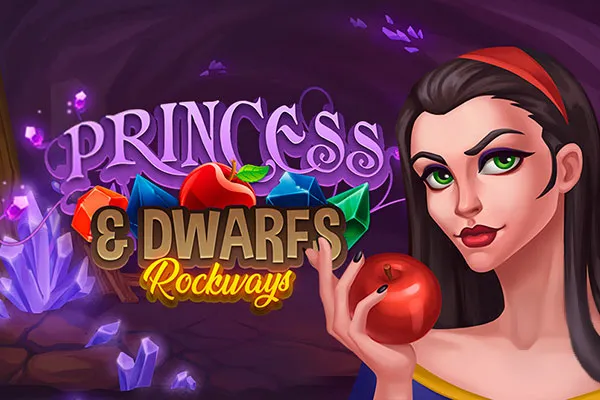SSLC Full Form: Understanding India's Crucial Secondary School Leaving Certificate
The acronym SSLC is frequently encountered in the Indian education system, particularly when discussing secondary education. But what does it actually stand for? This article provides a comprehensive overview of the SSLC full form, its significance in India, the curriculum, examination process, and its importance for a student's future. We will also explore alternative terms and delve into the nuances of this crucial certification.
Decoding SSLC: The Full Form and Its Meaning
The SSLC full form is Secondary School Leaving Certificate. It's a certificate awarded to students in India upon successful completion of secondary education, typically after completing Class 10. This certificate serves as a crucial milestone, marking the end of secondary schooling and opening doors to higher education and various career paths. The SSLC examination is conducted by state education boards across India, and the syllabus and examination patterns may vary slightly from state to state.
The Significance of the SSLC in India
The SSLC holds immense significance in India for several reasons:
- Educational Qualification: It is a fundamental educational qualification required for admission to higher secondary education (Class 11 and 12) and various vocational training programs.
- Employment Opportunities: Many entry-level jobs, especially in the government sector and certain private companies, require a minimum qualification of SSLC.
- Proof of Age and Identity: The SSLC certificate often serves as a valid document for proof of age and identity, especially in rural areas where other forms of identification may be less common.
- Foundation for Higher Education: The knowledge and skills acquired during the SSLC curriculum form a strong foundation for further studies in science, commerce, arts, and other disciplines.
- Career Guidance: The SSLC results often play a role in guiding students towards choosing appropriate streams for higher education, based on their performance and aptitude.
SSLC Curriculum: Building a Strong Academic Base
The SSLC curriculum is designed to provide students with a broad understanding of various subjects, equipping them with the necessary knowledge and skills for higher education and future careers. The core subjects typically include:
- Mathematics: Covers algebra, geometry, trigonometry, and statistics, developing problem-solving and analytical skills.
- Science: Encompasses physics, chemistry, and biology, fostering scientific reasoning and understanding of the natural world.
- Social Science: Includes history, geography, civics, and economics, providing insights into society, culture, and governance.
- English: Focuses on developing reading, writing, and communication skills in the English language.
- Regional Language: Emphasizes proficiency in the regional language of the state, promoting cultural understanding and communication skills.
In addition to these core subjects, students may also have the option to choose elective subjects based on their interests and career aspirations. These elective subjects can include computer science, vocational courses, or additional languages.
The SSLC Examination Process: A Test of Knowledge and Skills
The SSLC examination is a comprehensive assessment of a student's knowledge and understanding of the curriculum. The examination process typically involves:
- Written Examinations: Students are required to appear for written examinations in all the subjects they have studied. These examinations are usually conducted over a period of several weeks.
- Practical Examinations: In subjects like science and vocational courses, practical examinations may be conducted to assess the student's ability to apply their knowledge and skills in a practical setting.
- Internal Assessments: Many schools also incorporate internal assessments, such as projects, assignments, and class tests, as part of the overall evaluation process. These assessments contribute to the final grade.
The evaluation process is usually conducted by the state education board, and the results are declared after a period of time. Students who pass the examination are awarded the SSLC certificate.
State-Wise Variations in SSLC Examinations in India
While the SSLC full form remains consistent across India, the specific name of the examination and the conducting board may vary from state to state. Here are a few examples:
- Karnataka: Karnataka Secondary Education Examination Board (KSEEB) conducts the SSLC examination.
- Tamil Nadu: Directorate of Government Examinations (DGE) conducts the SSLC examination.
- Kerala: Kerala Pareeksha Bhavan conducts the SSLC examination.
- Maharashtra: Maharashtra State Board of Secondary and Higher Secondary Education (MSBSHSE) conducts the Secondary School Certificate (SSC) examination, which is equivalent to SSLC.
- Andhra Pradesh & Telangana: Board of Secondary Education, Andhra Pradesh/Telangana conducts the SSC examination which is equivalent to SSLC.
It's important to note that while the names may differ, the underlying purpose and significance of the examination remain the same: to assess a student's preparedness for higher education and future career opportunities.
Alternative Terms and Synonyms for SSLC
While SSLC is the most common term used in many states, other terms are also used interchangeably or have similar meanings. These include:
- SSC (Secondary School Certificate): This term is widely used in Maharashtra, Andhra Pradesh and Telangana.
- Matriculation: This is an older term that is still sometimes used to refer to the completion of secondary education.
- Class 10 Examination: This is a more general term that refers to the examination conducted at the end of Class 10, regardless of the specific certificate awarded.
The Importance of SSLC Marks and Grading System
The marks obtained in the SSLC examination play a crucial role in determining a student's future academic and career prospects. The grading system used to evaluate the performance of students may vary from state to state, but generally includes:
- Percentage System: Students are awarded marks as a percentage of the total marks in each subject.
- Grade System: Students are assigned grades based on their percentage scores. The grades may range from A+ (highest) to E (lowest).
- GPA (Grade Point Average): Some boards may also calculate a GPA based on the grades obtained in all subjects.
The marks and grades obtained in the SSLC examination are used for admission to higher secondary education, vocational training programs, and various competitive examinations. Students with higher marks and grades have a better chance of securing admission to prestigious institutions and pursuing their desired career paths.
Preparing for the SSLC Examination: Tips and Strategies
Preparing for the SSLC examination requires diligent effort, effective study habits, and a strategic approach. Here are some tips and strategies that can help students succeed:
- Understand the Syllabus: Familiarize yourself with the syllabus for each subject and create a study plan accordingly.
- Focus on Core Concepts: Focus on understanding the core concepts and principles rather than simply memorizing facts.
- Practice Regularly: Practice solving problems and answering questions regularly to reinforce your understanding.
- Solve Previous Year Question Papers: Solve previous year question papers to get an idea of the examination pattern and the types of questions asked.
- Seek Help When Needed: Don't hesitate to seek help from teachers, tutors, or classmates if you are struggling with any concepts.
- Manage Time Effectively: Learn to manage your time effectively during the examination to ensure that you are able to answer all the questions.
- Stay Calm and Confident: Stay calm and confident during the examination and avoid getting stressed out.
SSLC and Career Options: Paving the Way for the Future
The SSLC certificate opens up a wide range of career options for students. After completing SSLC, students can choose to pursue higher secondary education in science, commerce, or arts. They can also opt for vocational training programs in various fields, such as engineering, technology, healthcare, and hospitality.
Some of the popular career options after SSLC include:
- Engineering: Diploma in Engineering, Polytechnic courses.
- Medical: Diploma in Medical Laboratory Technology, Diploma in Nursing.
- Information Technology: Diploma in Computer Engineering, Diploma in Information Technology.
- Commerce: Diploma in Accounting, Diploma in Banking.
- Arts: Diploma in Fine Arts, Diploma in Performing Arts.
The choice of career path depends on the student's interests, aptitude, and career goals. It is important to carefully consider all the options and make an informed decision.
Conclusion: The SSLC as a Stepping Stone to Success
In conclusion, the SSLC full form, Secondary School Leaving Certificate, represents a significant milestone in a student's academic journey in India. It serves as a testament to their completion of secondary education and opens doors to numerous opportunities for higher education and career advancement. Understanding the significance of the SSLC, the curriculum, examination process, and the various career options available after SSLC is crucial for students to make informed decisions about their future. By preparing diligently and strategically, students can excel in the SSLC examination and pave the way for a successful and fulfilling career. The SSLC is more than just a certificate; it's a stepping stone to a brighter future.
Related Pages
- Best Crompton Fans for Indian Summers: High-Efficiency, Energy-Saving Coolers at Unbeatable Prices!
- Granules India Share Price Today: Live NSE Updates & Expert Analysis for Indian Investors!
- i999 Game: India's Ultimate Thrill – Play and Win Big Now!
- Matchbox9: India's Top Gaming Sensation – Unlock Exclusive Rewards Now!
- Explore Decathlon Siliguri: Best Sports Deals and Gear for Indian Fitness Enthusiasts!









